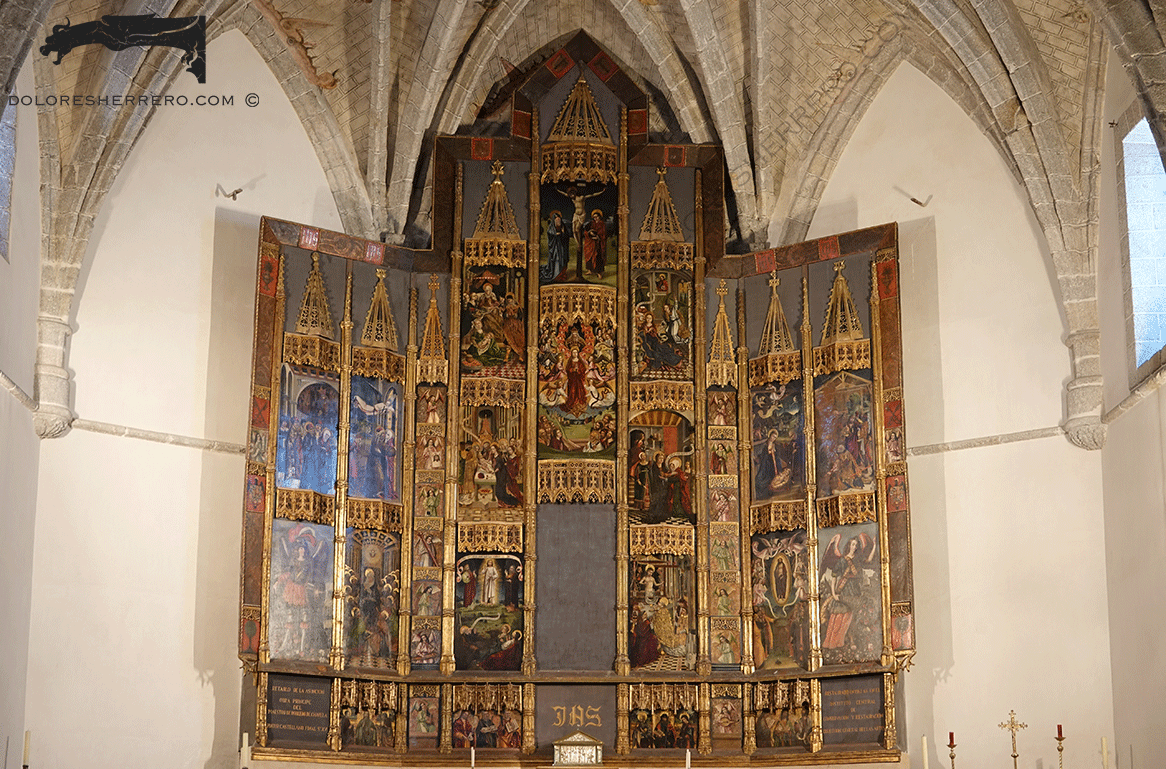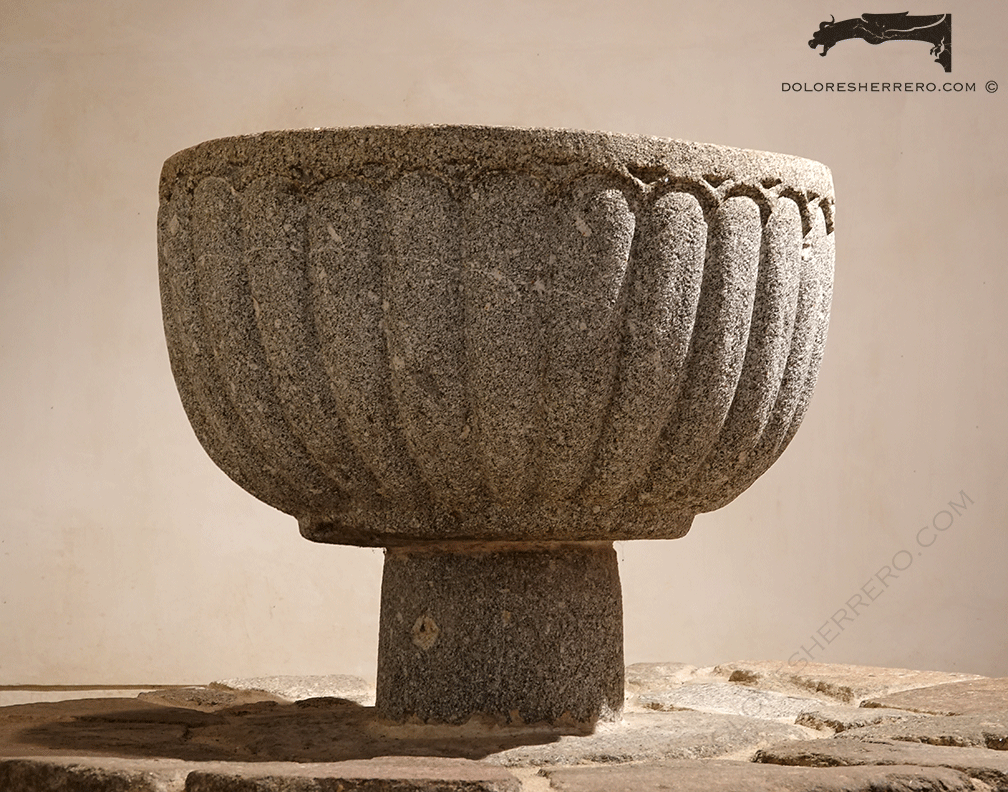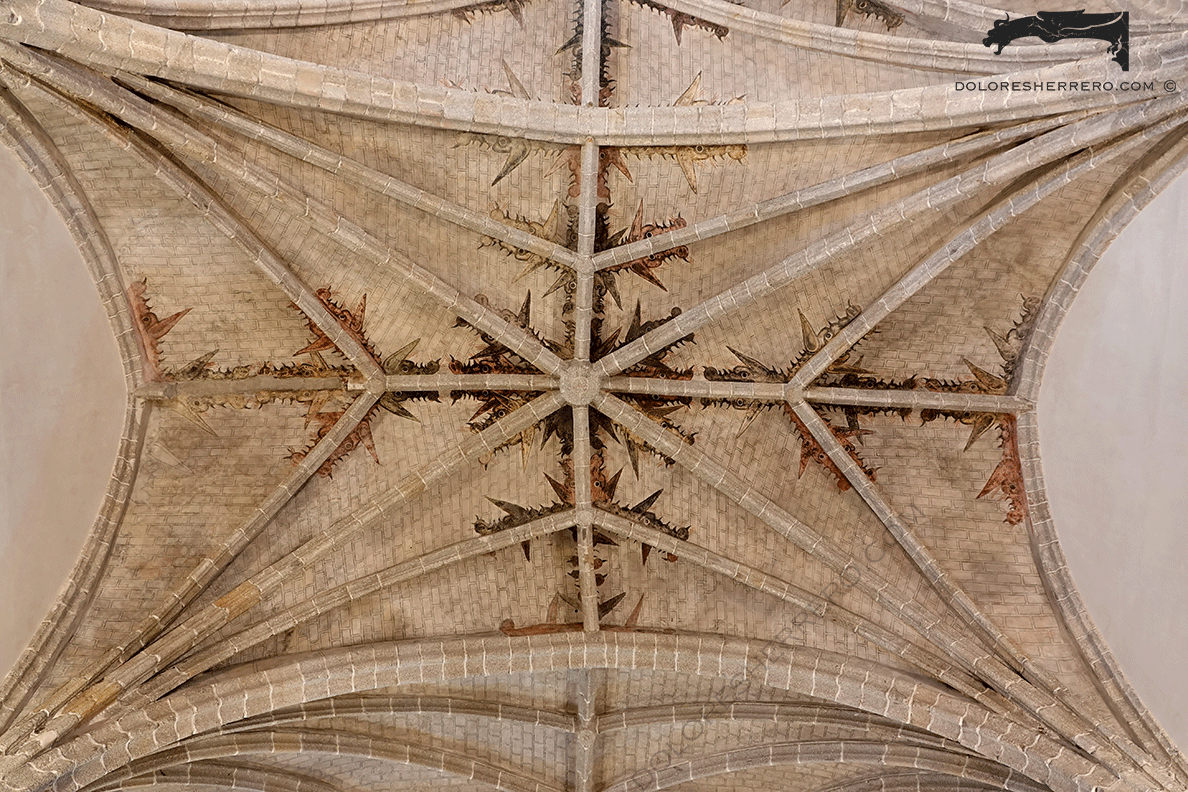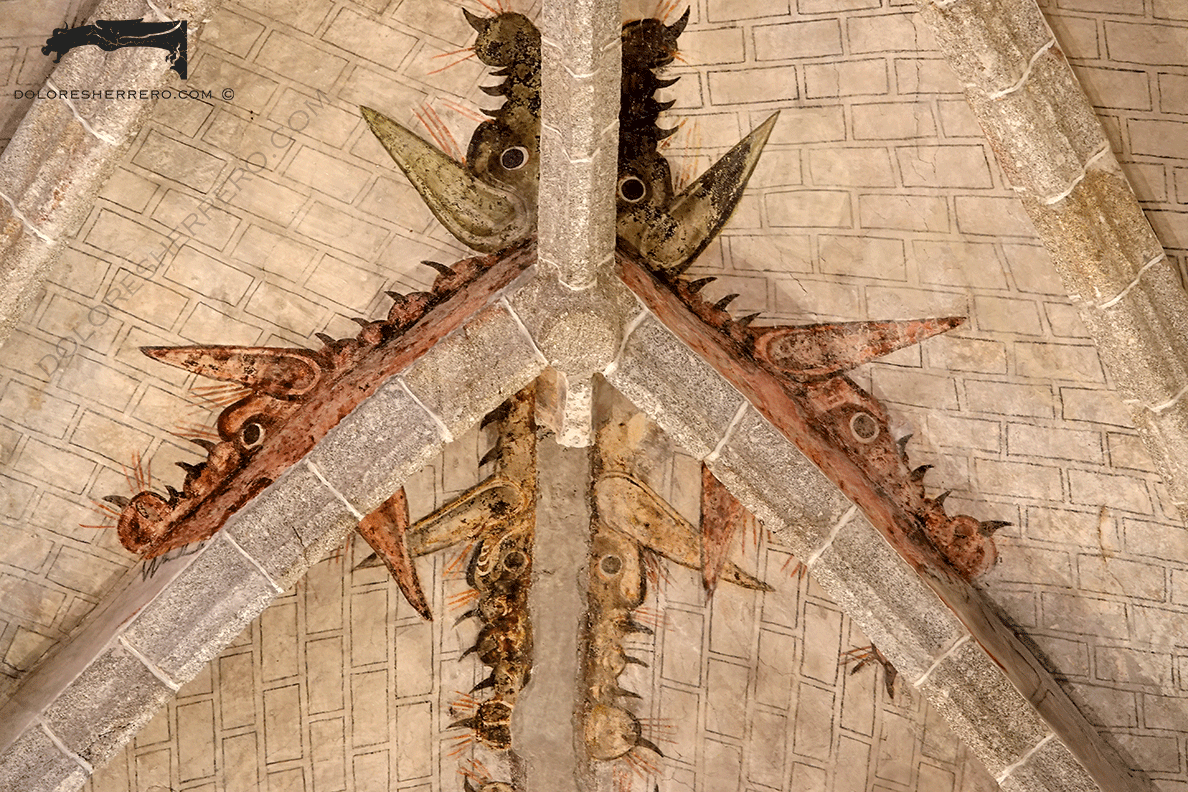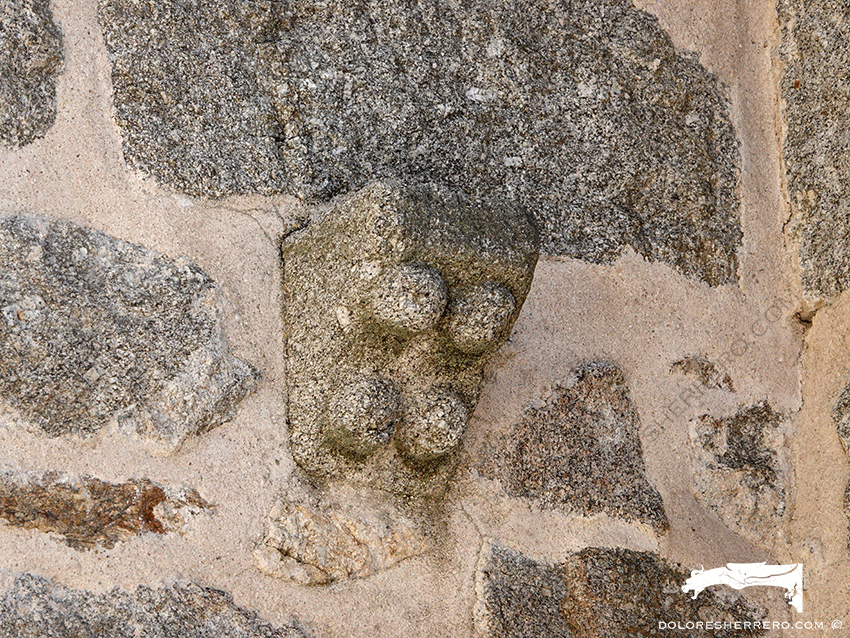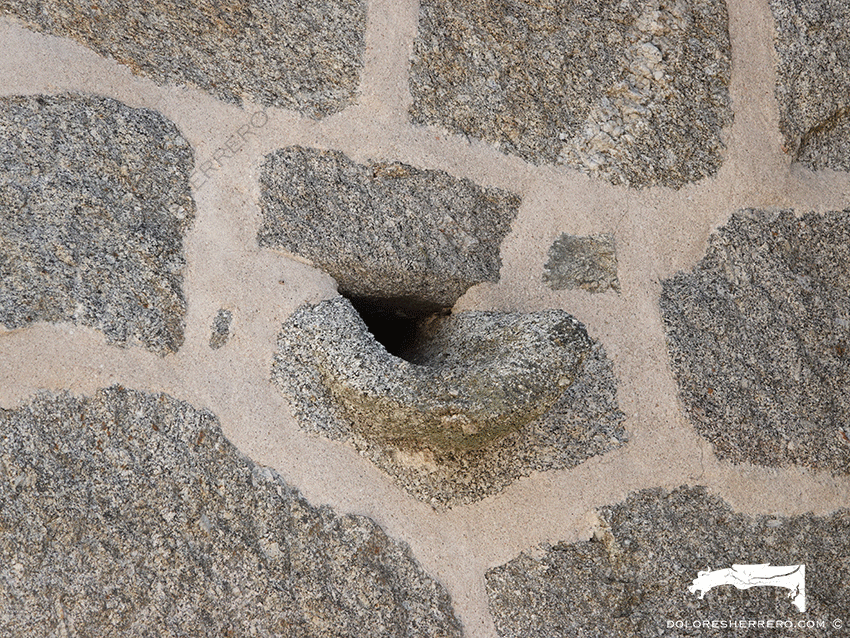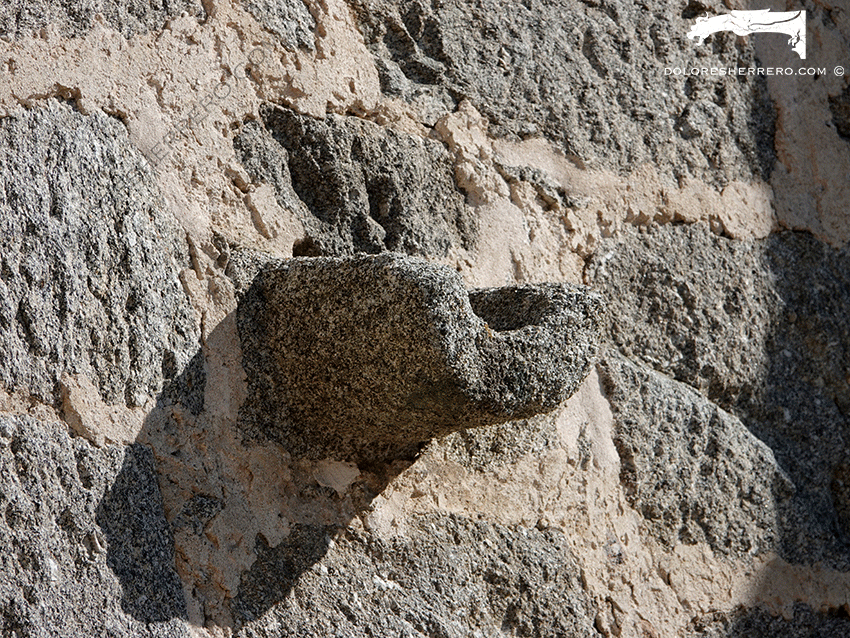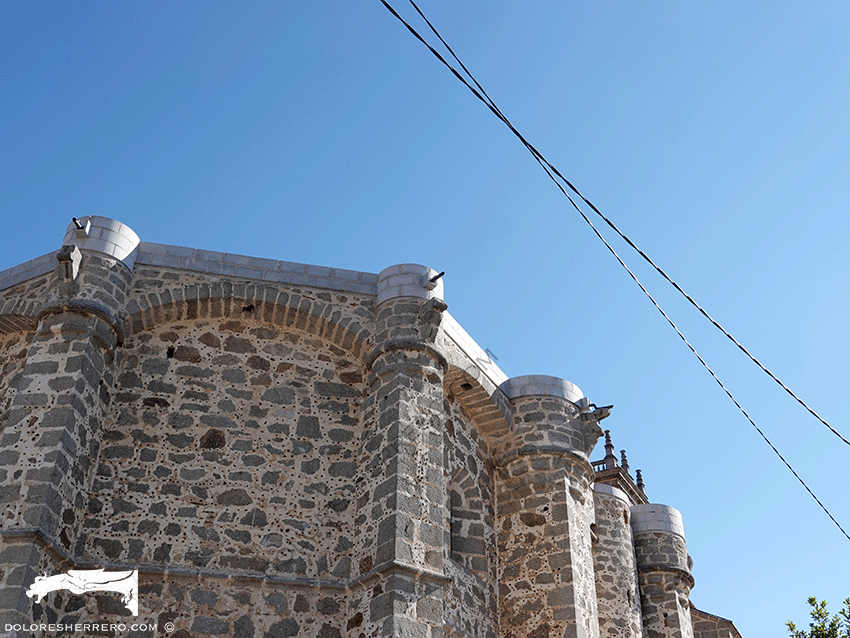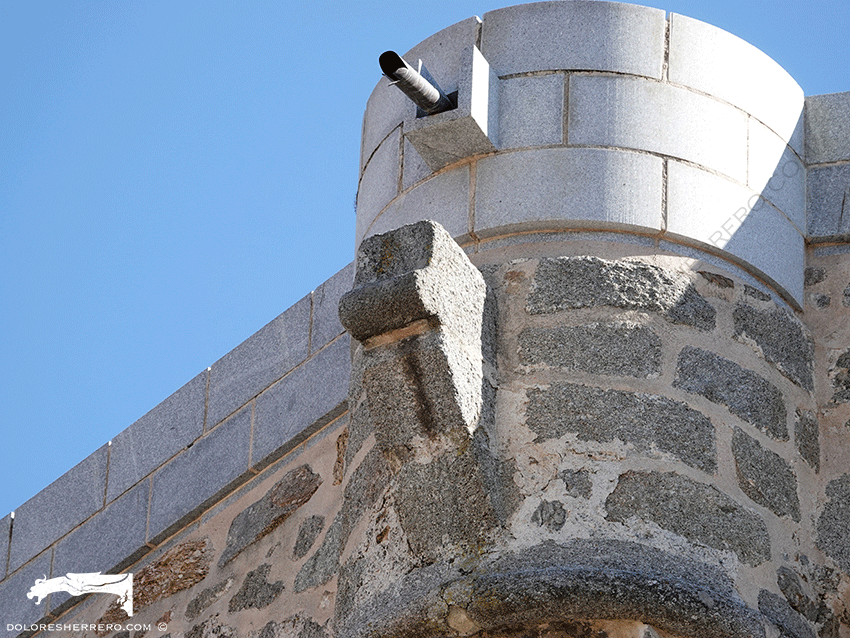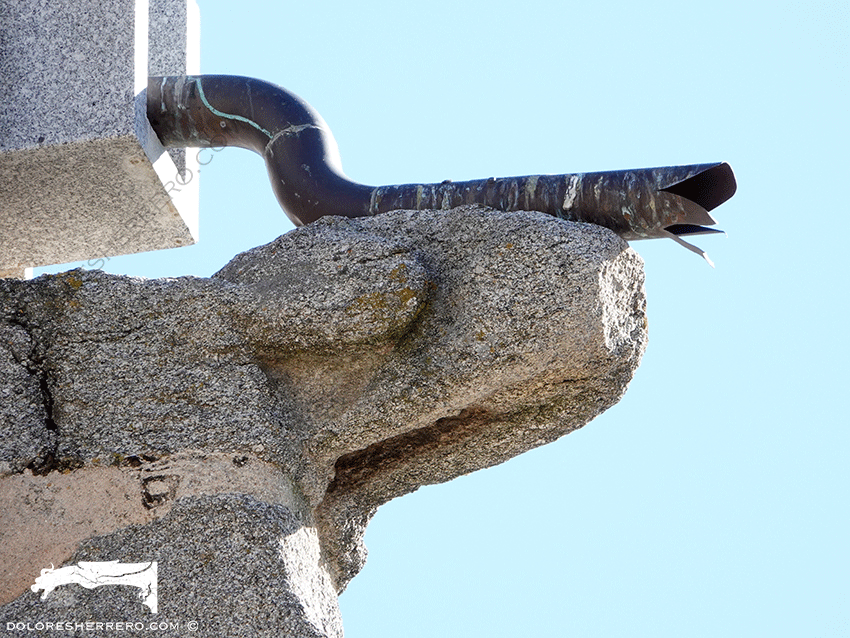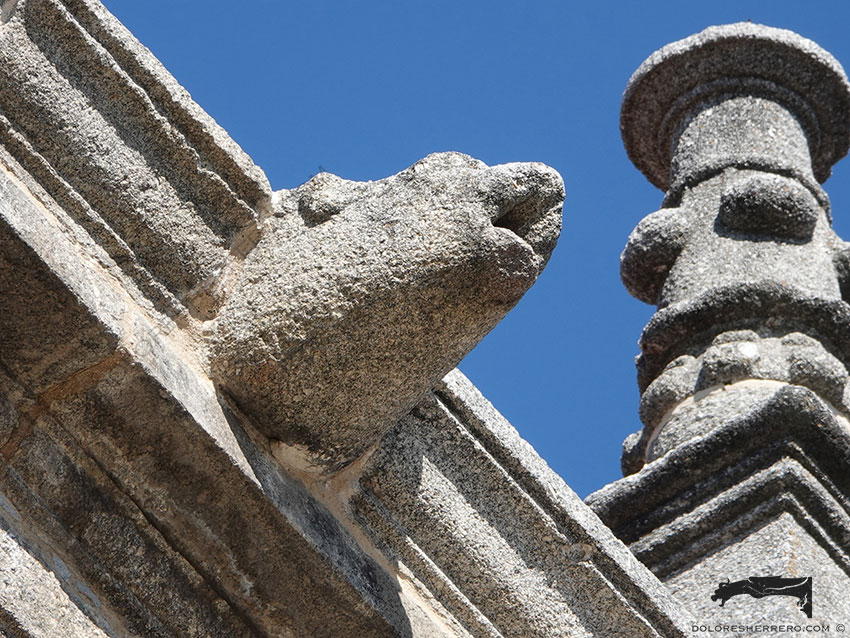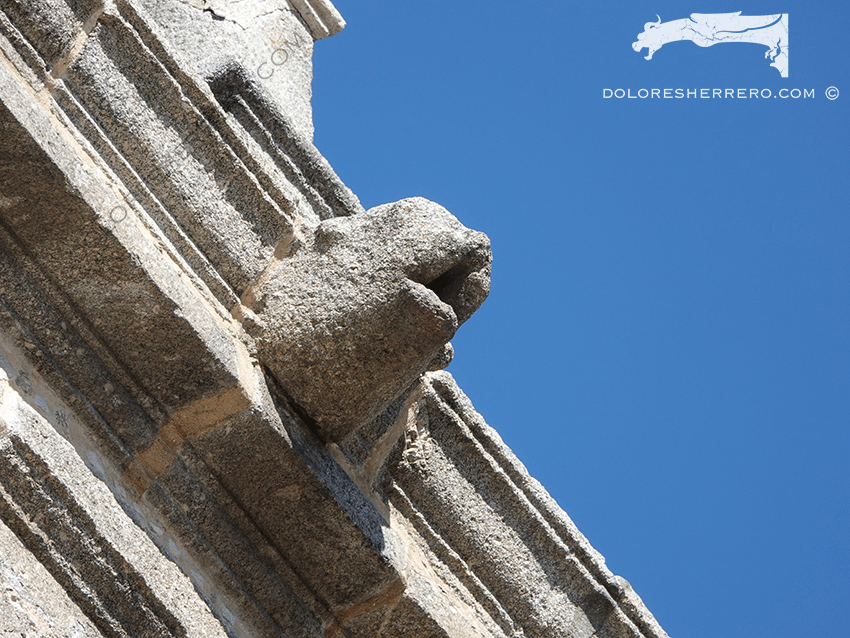Today’s post is dedicated to a wonderful church that we discovered thanks to Manuel Haro, art historian and secretary of the Ateneo Antoniorrobles. The church in question is the Iglesia de la Asunción de Nuestra Señora, in the municipality of Robledo de Chavela in the province of Madrid (Spain). It is a fortified church of exceptional artistic beauty. Strategically located on a hilltop, the church was built in various stages and styles (Romanesque, Gothic and Renaissance). Although only a few gargoyles remain, it is worth examining them in detail, as they form part of an exceptional monument whose interior is home to some genuine artistic treasures.
Before discussing the gargoyles, let’s take a look at some of these treasures inside the church. The artistic gems on display include the main altarpiece, a Hispano-Flemish work dating back to the early sixteenth century. It is a pleasure to feast our eyes on this altarpiece with its 32 panels and two seventeenth-century canvases, which together constitute a jewel in the crown of Madrid’s artistic heritage.
Also of note inside the church is the thirteenth-century baptismal font and the bust of St John the Baptist, which is displayed in the Chapel of the Passion and stands out for the exceptional detailing of the cut on the saint’s neck. The sculpture is attributed to Alonso Berruguete.
- Altarpiece
- Baptismal font
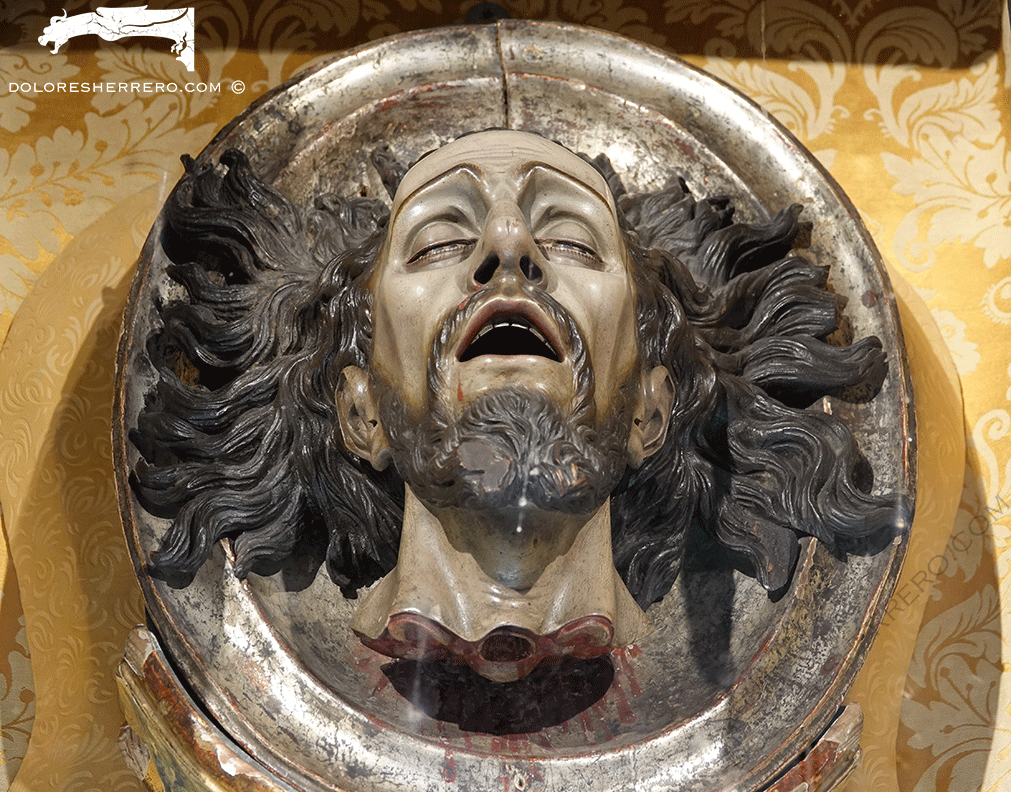
St John the Baptist
Last but certainly not least are the church’s dragons. During the restoration work carried out in 2010, a number of mural paintings were discovered. Dating back to around 1500, they comprise 76 impressive and stunningly beautiful dragons that decorate the vaulted ceilings. In the post on dragons we discussed their wide-ranging symbolism and their status as protective animals that stand guard over places of worship, treasure, etc. This apotropaic significance may well explain the existence of the dragons of Robledo de Chavela. Also of note is the small dragon on the south door of the church: although this miniature gem may go overlooked, it forms part of the extraordinary dragon motif that characterises this church.
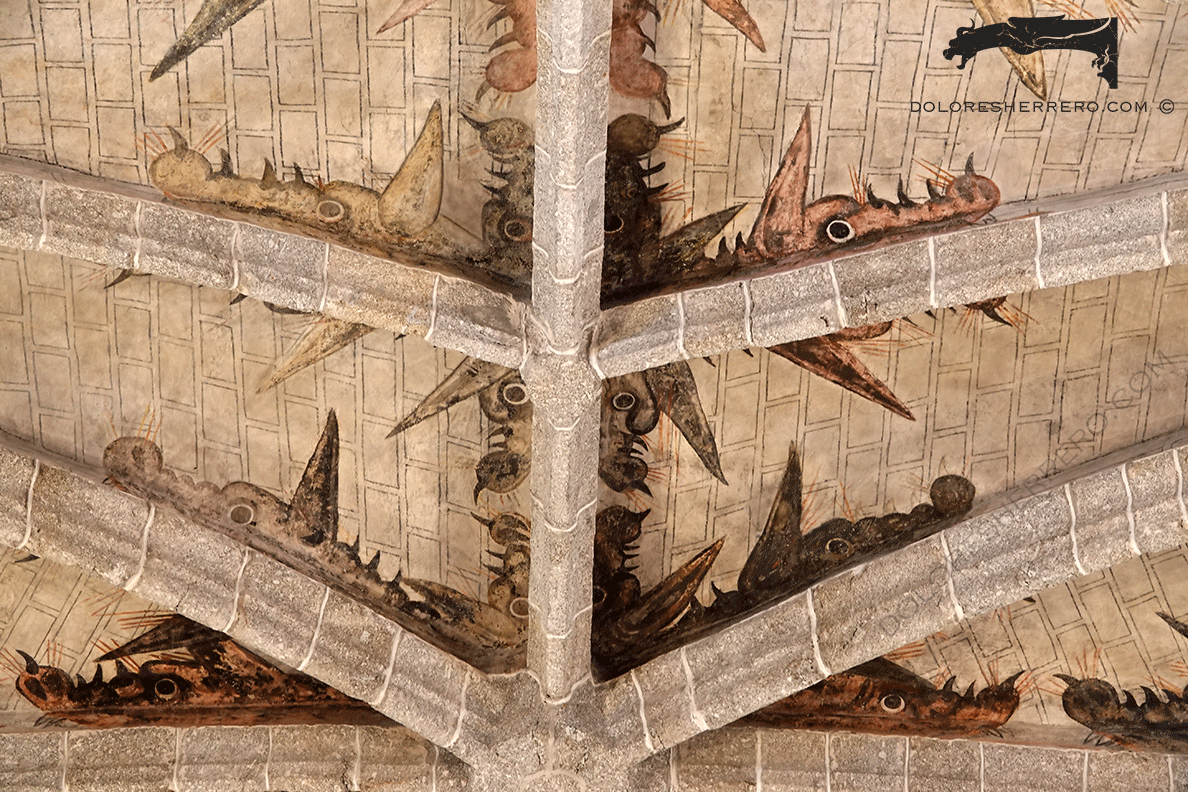
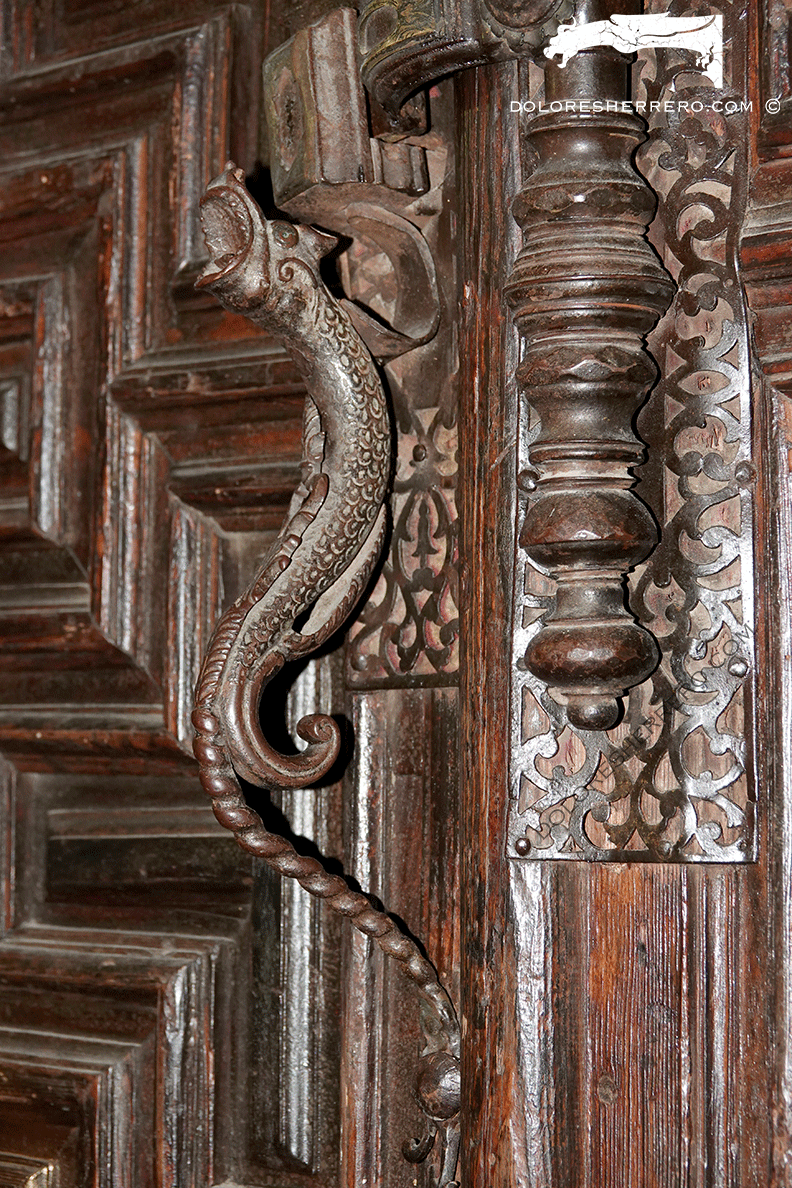
The Singular Gargoyles of the Church
Besides the gargoyles, on the church’s exterior there are a number of other elements of interest. For example, several brackets from the Romanesque era, bearing a decorative ball design, have survived to the present day.
Dating back to the Gothic era, there are a number of geometric gargoyles: highly schematic blocks of stone that are used for drainage and are devoid of any ornamentation.
On the buttresses, which culminate in overhangs linked by a parapet walk, there are remains of gargoyles. Sadly, the remains only consist of blocks of stone, except for one where we can make out the body of a quadruped, although unfortunately its head is missing. It is therefore highly probable that there were more gargoyles of a figurative nature on these buttresses.
Lastly, we will examine the gargoyles on the tower, which dates back to the sixteenth century. At the top of the tower there are two gargoyles that, although a little worn by the passage of time, appear to depict a pair of dog-like animals.
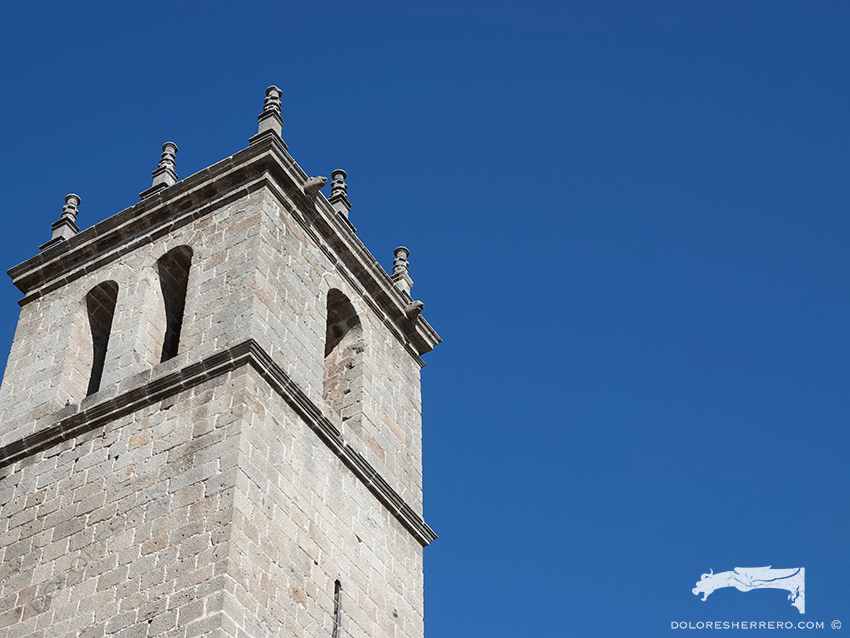
- Church of Robledo de Chavela (Madrid)
One of the best things about exploring the towns and cities of Spain is coming across stunning examples of the country’s heritage; and that is precisely what happened on our visit to Robledo de Chavela. The church in this town is an extraordinary structure, home to a mixture of various artistic styles and boasting unique and impressive treasures in its interior. Without a doubt, it is well worth a visit.
Guided tours of the church can be arranged through www.espaciorobledo.com. We encourage you to pay a visit to this charming town and discover its magnificent church.
Bibliography consulted
MANZARBEITIA VALLE, S., Pintura mural en la Comunidad de Madrid, Madrid, Consejería de Cultura, Turismo y Deporte – D. G. de Patrimonio Cultural, 2015.

Doctor of Art History and researcher specializing in the study of gargoyles.
I am Dolores Herrero Ferrio, and my thesis, “An Approach to the Study of Gargoyles of Gothic Cathedrals in Castilla and León”, is dedicated to the study of these fascinating figures.
If you like gargoyles and art history, you will also enjoy my book, “The Gargoyle and Its Iconography,” a book I have written with great care for those interested in the world of gargoyles.
I have created my own Encyclopedia of Gargoyles, a Gargopedia to share with you, where you will discover all the secrets and wonders of these enigmatic sculptures.
I hope you enjoy this Gargopedia as much as I have enjoyed creating it, and remember that each gargoyle has a story to tell, and here you will discover them all.
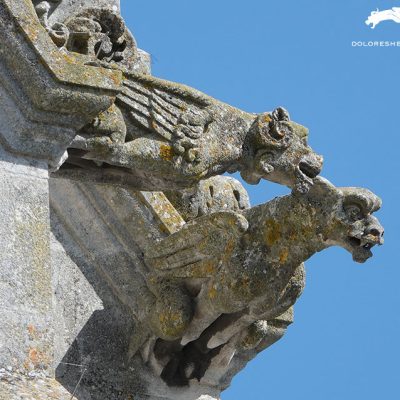 The Gargoyles of the Blois Cathedral
The Gargoyles of the Blois Cathedral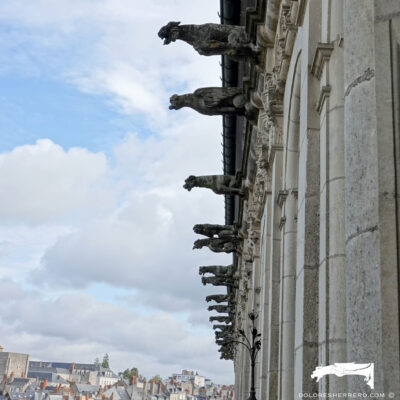 The Gargoyles of Château Royal de Blois
The Gargoyles of Château Royal de Blois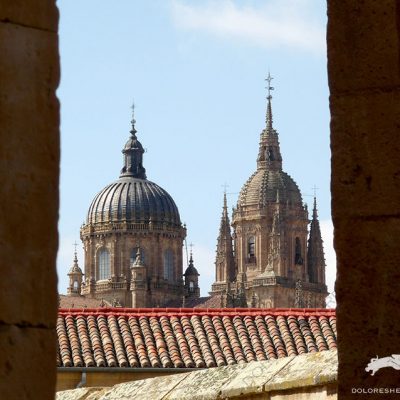 The Exceptional Gargoyles of the West Facade of Salamanca Cathedral
The Exceptional Gargoyles of the West Facade of Salamanca Cathedral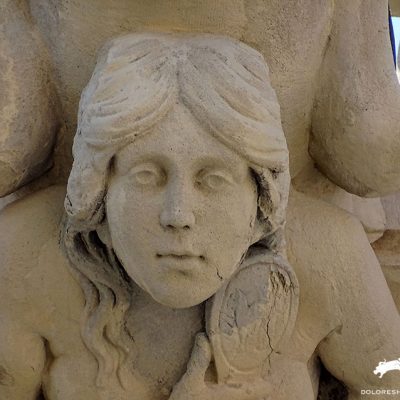 The Gargoyles of the University of Alcalá de Henares: A Sculptural Legacy of Madrid, Spain’s Heritage
The Gargoyles of the University of Alcalá de Henares: A Sculptural Legacy of Madrid, Spain’s Heritage The Elusive Gargoyles of the Meirás Towers in A Coruña, Spain
The Elusive Gargoyles of the Meirás Towers in A Coruña, Spain